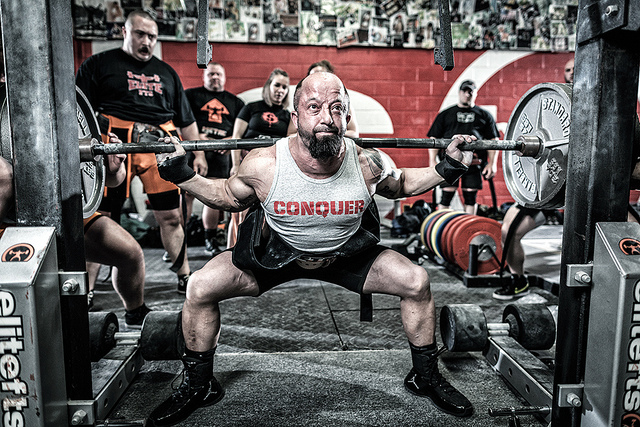
Ask any powerlifter what his most important joint is, and he’ll promptly answer “the hips.” The hips provide strength and stability in all three lifts. If you’re weak at the hips, you’re not going to do much on the platform. The same goes for all other athletes. The posterior chain is crucial for athletic success.
Anterior hip pain is extremely common in lifters, and pain will always limit performance. As with most other injuries, people rarely know why their hips are painful. They just want to know how to get rid of the pain. If you’re hurting, it’s your body telling you that something isn’t working correctly.
Many cases of anterior hip pain are caused by something known as femoral anterior glide syndrome. It may sound like a life-threatening malady, but it really just means that you’re using too much hamstrings and not enough glutes.
The hamstrings run from the pelvis to the lower leg. This means that although they extend the thigh, they have little to no direct control on the femur. As such, as the hamstrings extend the thigh, the femoral head slides forward in the hip joint capsule. The glutes attach directly onto the femur and pull the femoral head posteriorly during hip extension, preventing this anterior joint capsule irritation. Also, poor glute function will cause the adductor magnus—the forgotten hip extensor—to kick in excessively. This will cause some unwanted medial rotation of the femur, making that anterior hip pain even tougher to correct.
So, with all that said, how do we fix the hips? First off, let’s look at the conventional thought processes that we see:
- Ignore it.
- Stretch them out because we know lifters LOVE to stretch.
- Take a break from training.
- Put on some squat briefs.
And now my take on those options:
- Contrary to popular belief, weight training doesn’t have to be an injury-riddled sport. Otherwise, it wouldn’t be the foundation for modern physical therapy!
- Interestingly, hip flexor static stretching can actually irritate the joint capsule in the short-term. Plus, it only works on acute length and quality of the tissues and doesn’t really impact the central nervous system. Activation work for the dormant muscles is what is needed in this instance.
- That’s funny. Really. I’ve met all sorts of good lifters who don’t mind taking off time from training. I also have a pet unicorn. And Jim Wendler loses sleep over adrenal fatigue.
- Good, but unfortunately, the briefs aren’t particularly effective when you take them off. I don’t imagine that you want to wear the briefs 24/7 either.
Rather than criticize, I’m going to give you some quick fixes:
- Finish your squats, deadlifts, good mornings, pull-thrus, and glute ham raises correctly. When you pop the hips through at lockout, make sure that you’re firing your glutes to complete the movement. Imagine pinching something between your butt cheeks.
2. Bring your stance in a bit for a few weeks. This is a great time to do a lot of conventional pulling.
- Make sure you incorporate glute activation work in your programming. Simply integrating some dynamic flexibility and activation work can yield tremendous results. It’s one reason we created Magnificent Mobility. Dynamic flexibility exercises won’t irritate the joint capsule like prolonged static stretching. By integrating movements that combine glute activation with hip flexor lengthening, you kill two birds with one stone.
- Get some myofascial release done. Foam roll prior to all your dynamic flexibility warm-ups and visit a therapist certified in ART and/or massage.
- As the hip feels better, gradually add hip flexor stretches back into your program.
Keep in mind that this is just one common cause of anterior hip pain, and your specific condition may warrant different corrective exercise strategies. However, my experience tells me that the majority of you will respond tremendously well to these protocols.








